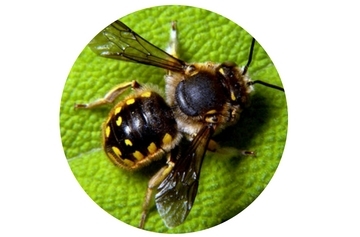
September is here! Here are some September gardening tips that you can look out for or try out in your garden.
Bitter pit in apples is a common problem that shows up as small dark, bruise-like spots near the end of the apple. This condition is caused by a lack of calcium uptake by the fruit. To keep it under control, mix one tablespoon of calcium nitrate in one gallon of water and spray the leaves of tree. This should be done in early spring just after bloom.
Winter squash is ready to harvest when the stem begins to shrivel. Pick just before the first frost; cure by letting it sit in the sun for at least 3 days, and turn daily. Squash will keep for up to 5 months if stored in a cool dry place.
Mosaic Virus on squash and cucumber plants is spread by aphids and cucumber beetles. The disease causes leaves to become rough and mottled. Plants can be stunted and fruit can turn whitish. It’s best to remove and discard diseased plants; do not add them to your compost pile.
Leave grass clippings on the lawn when you mow. They provide nitrogen and help retain moisture. Try to mow your lawn frequently. Cutting more than 1/3 of the height off of your lawn at any one time stresses the lawn. This will leave it more vulnerable to pests and disease.
Deep water trees twice during the summer, even when they are planted in the lawn. Use a soaker or drip hose around the drip line of the tree; let it drip slowly for 2 to 3 hours. Mature fruit trees should be watered every 3 to 4 weeks; young fruit trees need to be watered every 2 weeks. Some mature ornamental or street trees may not need any water, but check the variety to be sure.
Yellowing gardenia leaves is generally caused by chlorosis – a lack of iron in the soil. With a mild case, the veins remain green; with a more severe case, they turn completely yellow. Treat the soil with iron chelate in accordance to the package directions.
Leafcutter bees cut smooth, round or oval holes in plant leaves, especially roses. They use the leaf fragments to line each brood cell of their underground hives in order to store nectar and pollen. Each cell is then sealed with a single egg inside. Larva pupates in the chamber and then emerges in spring. A leafcutter bee is considered a beneficial insect.
For our complete list of September Gardening Tips, click on: http://www.mastergardeners.org/tips/september.html








 Being an avid gardener, born and raised in Indiana, I feel incredible blessed to live in sunny California & be able to grow my own food all year-round! I write a monthly garden column for the San Jose Mercury News & am constantly striving for tips & ideas on how to live a little more gently in regards to ourselves, our planet & each other – basically sustainability we can live with! As a
Being an avid gardener, born and raised in Indiana, I feel incredible blessed to live in sunny California & be able to grow my own food all year-round! I write a monthly garden column for the San Jose Mercury News & am constantly striving for tips & ideas on how to live a little more gently in regards to ourselves, our planet & each other – basically sustainability we can live with! As a 



